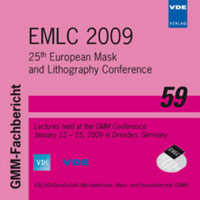Mask salvage in the age of capital contraction
Conference: EMLC 2009 - 25th European Mask and Lithography Conference
01/12/2009 - 01/15/2009 at Dresden, Germany
Proceedings: EMLC 2009
Pages: 5Language: englishTyp: PDF
Personal VDE Members are entitled to a 10% discount on this title
Authors:
Kimmel, Kurt R. (Advanced Mask Technology Center, Rähnitzer Allee 9, 01109 Dresden, Germany)
Abstract:
An advanced photomask is rarely made meeting all specifications in one attempt. In the photomask industry, yield is the critical component to all key performance measures including cost and delivery time. Defect-free advanced masks are extremely difficult to manufacture but leading-edge masks simultaneously meeting atomic level pattern placement, angstrom level CD uniformity, and defectivity to virus size sensitivity are a rarity. While the patterning and inspection segments have been the long-time nemeses of cost, the ideal mask fabrication process will perform these operations only once per mask order. To enable this, mask salvage processes are essential. Defects are the primary priority and are addressed with cleaning and repair techniques of various types targeted to needs. CD uniformity is addressed with predictive and feedback mapping techniques. CD uniformity is also addressed with post-mask fabrication gray-mask correction and dose correction at the scanner. Mask pattern placement correction by systematic error mapping is done but post-mask-patterning correction represents an opportunity for salvage process development. Until consistently superior mask registration can be achieved during or after patterning, self-aligned wafer processing will continue to be the primary enabling method for optical double-exposure while normal scaling issues will challenge EUV mask development. It is the ability to perform the high-cost operations only once to create each mask and then recover individual specification parameters with salvage operations which will differentiate mask makers in the future.


